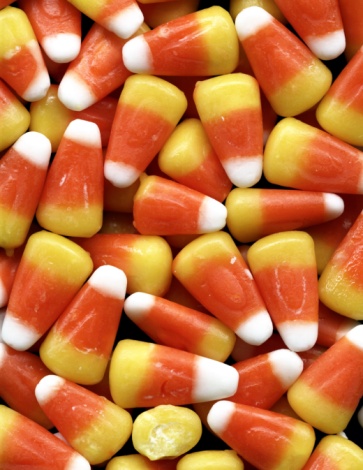 Halloween is every child’s favorite holiday. They get to dress up as their favorite characters and run around collecting candy with their friends and family. Even though Halloween is fun for everyone it isn’t always fun for children’s teeth.
Halloween is every child’s favorite holiday. They get to dress up as their favorite characters and run around collecting candy with their friends and family. Even though Halloween is fun for everyone it isn’t always fun for children’s teeth.
 Halloween is every child’s favorite holiday. They get to dress up as their favorite characters and run around collecting candy with their friends and family. Even though Halloween is fun for everyone it isn’t always fun for children’s teeth.
Halloween is every child’s favorite holiday. They get to dress up as their favorite characters and run around collecting candy with their friends and family. Even though Halloween is fun for everyone it isn’t always fun for children’s teeth.730 years ago, the famous Egyptian king, Ramses II, was a powerful leader but an extremely poor example of oral health. Upon investigation, scientists postulate that the king died from heart disease that sprung directly from his rampant gum disease. His teeth can still be examined today, held in place by strong tartar buildup that holds them in like concrete. He did not brush and floss like he should have, which allowed plaque to build and harden into tartar. This resulted in an infection in his gums, or periodontal disease.
Did you know those germs in your mouth were so powerful? It’s kind of scary, but it’s true. Our mouths are full of bacteria — up to 600 different kinds. The really dangerous strand is Streptococci mutans, which causes cavities. Unlike many body parts, teeth don’t shed an outer layer. It’s up to you to control oral bacteria and keep it from getting out of control, which could lead to dental problems and serious overall health issues.
The germs that cause cavities do not discriminate based on your occupation or age – you might be a king, an executive, or an elementary school student; they’ll overtake your mouth and destroy good oral health if you let them. While cavities can seem rather innocuous, they are more serious than you might think. Letting cavities grow and harmful bacteria to flourish can allow infection to reach the brain. In fact, in 2007, a 12-year-old boy in Maryland died from a tooth infection, which entered his bloodstream and eventually reached his brain. S. mutans also cause bad breath and, even worse, gum disease. Also known as periodontal disease, gum disease increases the risk for heart disease, stroke, Alzheimer’s disease, diabetes complications, and the list goes on. Look at Ramses II. Gum disease can be fatal.
To reduce the potential for cavities and gum disease, you have to brush, floss, and attend regularly scheduled checkups and cleanings. Not only will this approach give you fresh breath and save your teeth, it might just save your life.
Set an appointment with Dr. Peter Pate in the Buckhead community. Call 404-266-9424, or contact us online to schedule your visit. Located in Buckhead, our Atlanta dental office serves many local families from all around the metropolitan area.
 School and extracurricular activities are in full swing. While it’s important to help prepare your child for class projects, piano lessons, and football, you’ll also want to make sure your children’s teeth and gums are ready for the new school year.
School and extracurricular activities are in full swing. While it’s important to help prepare your child for class projects, piano lessons, and football, you’ll also want to make sure your children’s teeth and gums are ready for the new school year.
Tooth decay is one of the most common childhood diseases. More than half of children ages 5 to 17 have had at least one cavity or filling in their lifetime. Being proactive about protecting your child’s teeth from plaque, tartar, and decay can prevent gum disease and begin a lifetime of consistent oral healthcare.
A daily schedule that includes brushing and flossing is essential to preventing pediatric dental decay. Returning to the structure of the school year should help make such a schedule easier to follow.
Maintaining healthy family eating habits will help your son or daughter choose to eat foods that promote good oral health. Plan well-balanced meals and avoid sugar-loaded foods. It is also important to limit drinks and foods with a high acid content.
With Halloween just around the corner, it’s a good time to continue educating your child about tooth decay and why candy and sugary snacks should be enjoyed sparingly. You might also try some candy alternatives, such as xylitol-infused candies or sugar-free licorice root lollipops, which research has shown fight dental bacteria and plaque.
Call Dentistry in Buckhead today if you live in the Atlanta area and would like a family dentist who understands parenting firsthand. As a family man and father, Dr. Peter Pate knows that you want the best for your kids, and he’ll help you by providing excellent dental care in an inviting, comforting atmosphere. Call 404-266-9424 and schedule your family’s checkups today.
Today is National Tooth Fairy Day! If you have ever known a young child who has lost a tooth, you know how important it is to be visited by this dental nymph. What is the origin of this fantasy figure?
The history of the tooth fairy, as told by some, is actually a rather dark tale. In the Middle Ages, witches were on the lookout for items that could be used to work their black magic. They thought items held especially close to someone – like hair, clothing, and even teeth – were prime ingredients for potions and spells. Therefore, baby teeth were quickly discarded either by fire or buried out of sight.
In less ominous traditions, parents took their children’s teeth and buried them in the garden in order to “grow” strong, healthy adult teeth in their place. This tradition was adapted over time and some people buried the teeth in flower pots inside the home. Today, of course, the location has moved to the pillow where it is “buried” for the night until a fairy comes to retrieve it, leaving a coin, toy, or treat for the child to discover upon waking
Children in Cambodia toss their lower teeth on the roof and bury their upper teeth in the ground. They hope that the new teeth will grow towards the old teeth and be straight. In Turkey, parents bury their children’s teeth in a location that might benefit the child’s future, such as a college campus garden or at a hospital. In Kyrgyzstan, a child will hide his tooth in a piece of bread and give it to an animal with desirable teeth. In other countries, the baby teeth are regarded as mementos or small treasures. Such is the case in Chile, where the lost tooth is made into a charm and set in precious metal to be used as a necklace or an earring.
Although children eventually lose these “baby” teeth, it is still important to keep them healthy and clean. One of the best ways to instill healthy oral habits for your child is to practice brushing and flossing with them at an early age. Call Dentistry in Buckhead today if you live in the Atlanta area and would like a family dentist who understands parenting firsthand. As a family man and father, Dr. Peter Pate knows that you want the best for your kids, and he’ll help you by providing excellent dental care in an inviting, comforting atmosphere. Call 404-266-9424 and schedule your family’s checkups today.
In general dentistry, technological advances have become a major part of prevention. The DIAGNOdent Laser Cavity detector is a laser we use to detect the tiniest, hidden bits of decay and demineralization in your teeth. Previously undetectable areas and amounts of decay are now caught by this laser. It almost sounds too good to be true, right? Just how does this amazing technology work?
The DIAGNOdent is a small hand piece that Dr. Peter Pate will use to scan your teeth, gums, and entire oral cavity. Using a completely safe, high-powered light to illuminate your mouth, we will be able to easily identify abnormalities based on the way the light appears.
Scientists discovered that altered tooth substances and bacteria will give fluorescent feedback at certain wavelengths of light, while normal tissue and areas will appear a constant color throughout.
The DIAGNOdent operates at a wavelength of 655 nm. At this wavelength, clean teeth will have no fluorescence. The machine will display low scale readings. If any tooth has decay and/or demineralization, it will show fluorescence and the display readings will be high.
The device is equipped with audio signals to point out areas of concern. This audio guide allows us to stay focused on you during your exam, rather than constantly watching the computer monitor.
The process will be very fast and completely comfortable for you. After your exam, you can feel confident about the health of your teeth without worrying about what problems might be lurking in the hard-to-see areas of your mouth. This is just another perk of having regularly scheduled dental exams and cleanings.
Dr. Pate and his team will use the latest technology to help you attain the best possible oral health. Just call Dentistry in Buckhead today at 404-266-9424.
You’ve seen the movie “My Big Fat Greek Wedding,” right? If not, you’re seriously missing out. Nia Vardalos, the star and brains behind the movie, is hilarious. What you might not know, however, is that she is a probiotics enthusiast, which impacts how she takes care of herself and her daughter.
Probiotics are “good” bacteria that help keep your health in check. You probably know that probiotics are found naturally in yogurt. Now there’s another easy source. GUM® just released PerioBalance, a mint-flavored daily lozenge containing a blend of probiotics to help neutralize harmful bacteria surrounding your teeth and gums.
As a family dentist in Atlanta, Georgia, Dr. Peter Pate agrees with many of Nia’s tips for a healthier smile. Check them out:
Above all, Nia made a point of teaching her daughter how to brush and floss. “It’s all about prevention. Invest now, avoid health issues in the future,” Nia says.
Well said, Nia! Dr. Pate and his team at Dentistry in Buckhead provide dental care to patients of all ages in the greater Atlanta area. To schedule an appointment, call (404) 266-9424.
Content for this blog post found on EverydayHealth.com.
Get this! In 2003, Americans chose the toothbrush as the “cannot live without” invention. The toothbrush won over computers, cars, cell phones, and the microwave!
People have always wanted clean teeth. Until the first toothbrush was invented, folks used a frayed stick, feathers, bones, porcupine quills, and just about anything they could come up with to get plaque and food off their teeth.
The first toothbrushes on historical record were created in China around 1498. They were made of hog’s hair in bamboo and worked much like today’s toothbrush.
In 1780, William Addis first mass produced a toothbrush. He came up with the idea and made the prototype while in prison (for causing a riot — those rowdy oral healthcare guys!). The toothbrush was made with a small animal bone and bristles inserted through drilled holes. (What small animals are in a prison? Ugh. Don’t ask.)
In 1857, Mr. H. N. Wadsworth patented a toothbrush in the United States, and mass production came about in 1885. Again, the inventor used a bone handle and boar’s hair in the design.
DuPont introduced nylon bristles in 1938, and they were a much better choice. They did not harbor bacteria, and they dried much faster than boar’s hair.
Broxodent released the first electric toothbrush at the American Dental Association (ADA) convention in 1960. (Yay!)
Now, here are the best toothbrush practices for your family…